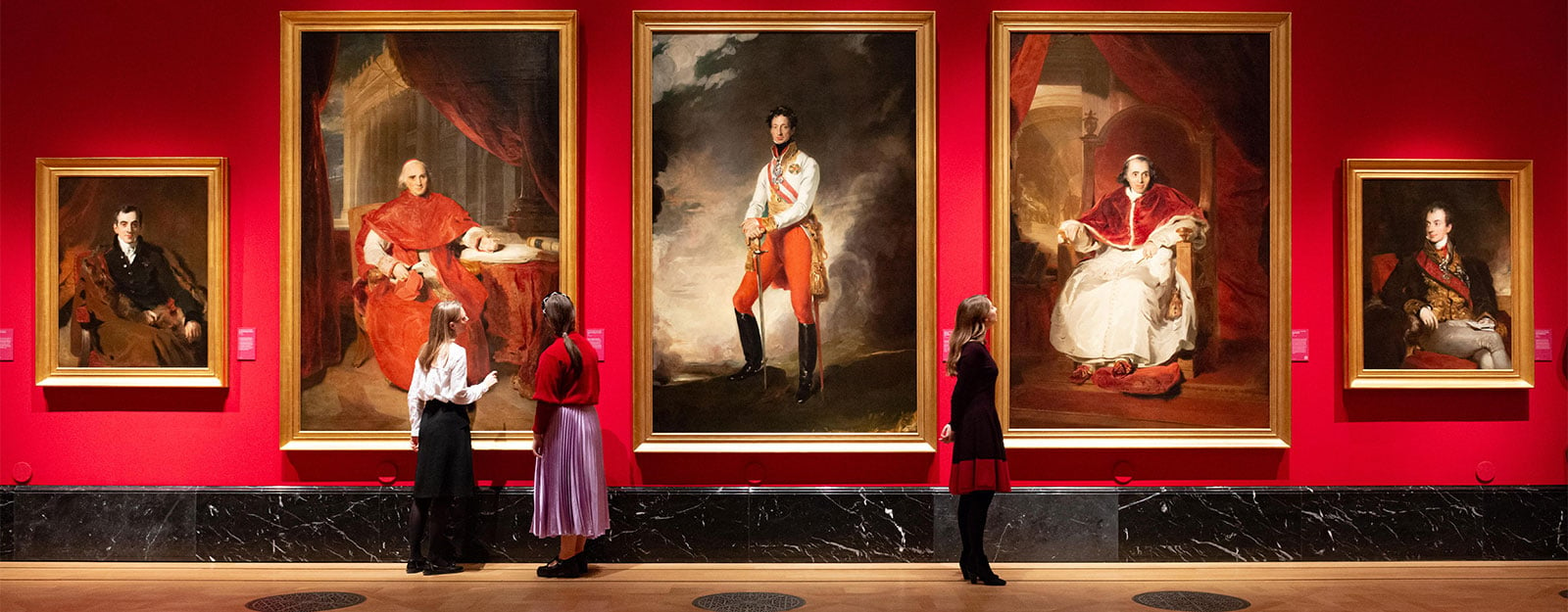
About the Collection
Learn more about the Royal Collection, one of the most important art collections in the world.
Literature and music
English literature
Highlights of the Royal Library’s extensive collection of English literature include the copy of Emma by Jane Austen (3 vols, 1816) which was presented by the author to the Prince Regent, later George IV, and copies of the First, Second, and Third Folios of the Complete Works of Shakespeare. The Second Folio (1632) is perhaps most important as it bears annotations by Charles I, and is likely to have been the copy read by the King during his imprisonment at Carisbrooke Castle.
After Charles I’s death, the copy passed through several hands before ending up in the library of the great Shakespearean commentator, George Steevens (1736–1800), at whose sale in 1800 it was purchased by George III.
Significant sections of the English literature collection come from George IV’s library at Carlton House and from the collections of Queen Victoria.
Languages, linguistics & world literature
The Library contains a very wide array of ancient, modern and invented languages. Collecting habits of successive monarchs, and official gifts received, have resulted in the Royal Library gaining an excellent collection of international literature. In addition to works in French, German, Italian and Spanish, there are many volumes in Russian, Serbian and Hungarian as well as numerous Indian, Asian and African texts.
A lot of this material was gathered by Prince Albert, and includes numerous translations of famous nineteenth century works. Some of the most important include a manuscript Persian translation of Queen Victoria’s More Leaves from the Journal of a Life in the Highlands from 1862 to 1882 (1884–5) and the first German edition of Lewis Carroll’s Alice’s Adventures in Wonderland (1869), presented by the author to Princess Beatrice, Queen Victoria’s youngest child. Among the languages covered by the Library are Inuktitut, Gaelic, Welsh, Manx, Manchu, Tibetan, Malay, Mohawk, Swahili and Lips-kith, a language created in 1919, which was intended to serve as a lingua franca for diplomacy.
Poetry
Patronage of poetry has always been important to the British monarchy, and as a consequence the Library holds material presented by every Poet Laureate since William Wordsworth (1770–1850), including unique manuscripts commissioned by, or for, the Royal Family. Among the most important recent acquisitions to this collection are works by the current Poet Laureate, Carol Ann Duffy, celebrating the 60th Anniversary of The Queen’s Coronation (The Crown, 2013) and whisky (Drams, 2014).
An exhibition, Poetry for the Palace, was held in The Queen’s Gallery at the Palace of Holyroodhouse in 2014 to commemorate the relationship between the Monarchy and Poets Laureate throughout history.
Classical literature
The basis of the Royal Library’s collection of Classical literature came from George III’s libraries at Windsor and Kew. This was later supplemented with additions of significant material during the reigns of George IV, Queen Victoria and King George V.
Highlights include an Italian edition of Horace, once owned by Leopold II, Holy Roman Emperor (r. 1790–92) while Grand Duke of Tuscany (2 vols, 1778), the first English edition of Thucydides, published in 1550, and the first printed Greek edition of Homer, published in 1488 (2 vols).
Music & sound recordings
In 1957 the Royal Music Library was given to the nation by The Queen and now forms part of the Music collections at the British Library, where it may be consulted. However, there are still some significant pieces of music in the Library’s collection as well as pianola rolls and sound recordings.
The Library contains a manuscript composition by Mozart, written when he was 11 years old (1767) purchased by Prince Albert in 1841; and a composition arranged by Felix Mendelssohn for Queen Victoria and Prince Albert to play as a piano duet (1847).







